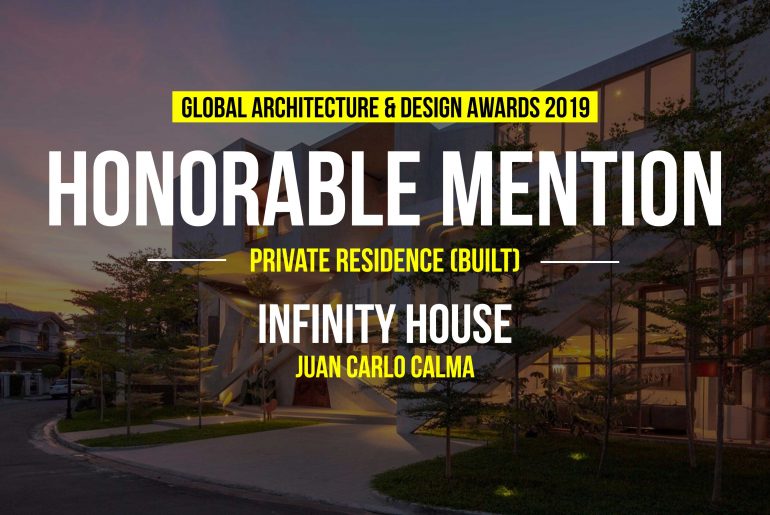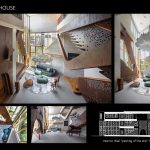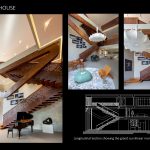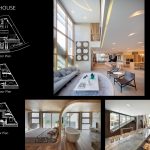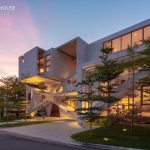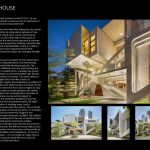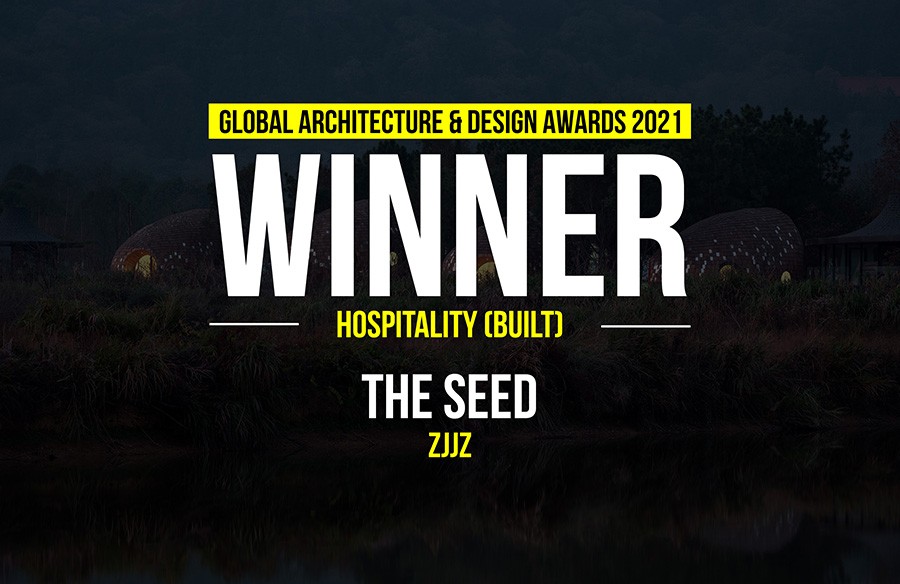Is Infinity House simply a place to live? Or is it, as our studio views it, a living kinetic sculpture and an example of what we call – architecture of exuberance?
We imagine a home that feels like falling into an Escher-esque rabbit hole and into an anomalous garden of raw concrete with oxidized metal, bent wood, and textural stone.
Global Design & Architecture Design Awards 2019
Honorable Mention | Category: Private Residence (Built)
Project Name: Infinity House
Architect: Juan Carlo Calma
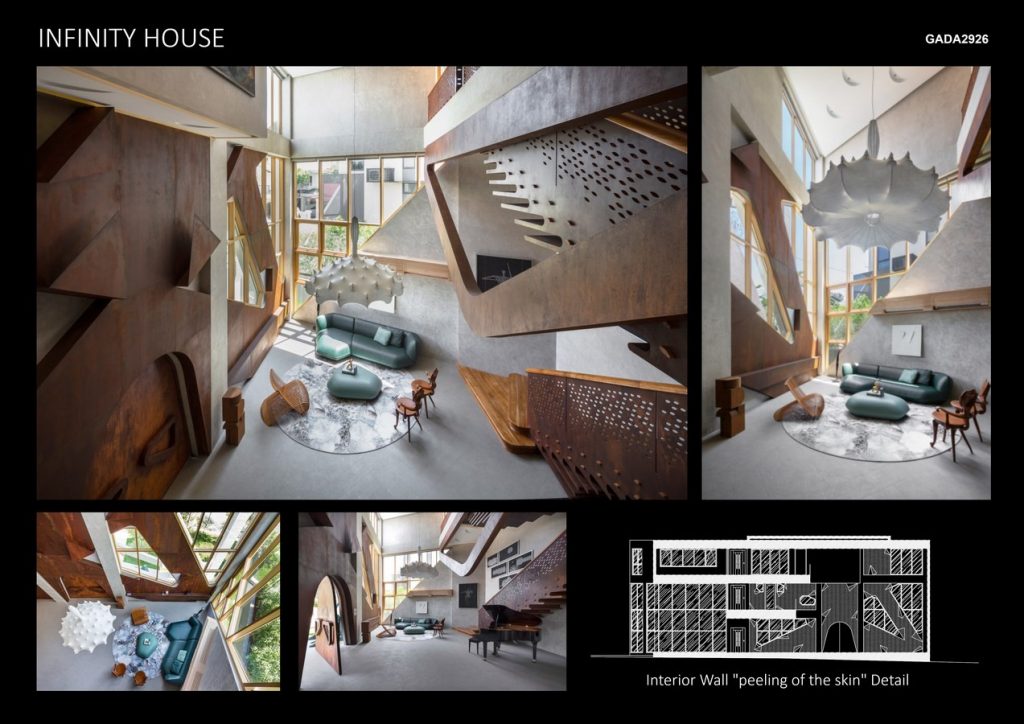 As you emerge on the other side of the doors of perception, the gaze of the mind’s eye expands in sensory reverence with scale and proportion-defying cathedral like space of absurdities and improbabilities. There is a distinct sense of being in a place that is disjointed from time – temporal – one that is beyond reason yet strangely familiar and comforting.
As you emerge on the other side of the doors of perception, the gaze of the mind’s eye expands in sensory reverence with scale and proportion-defying cathedral like space of absurdities and improbabilities. There is a distinct sense of being in a place that is disjointed from time – temporal – one that is beyond reason yet strangely familiar and comforting.
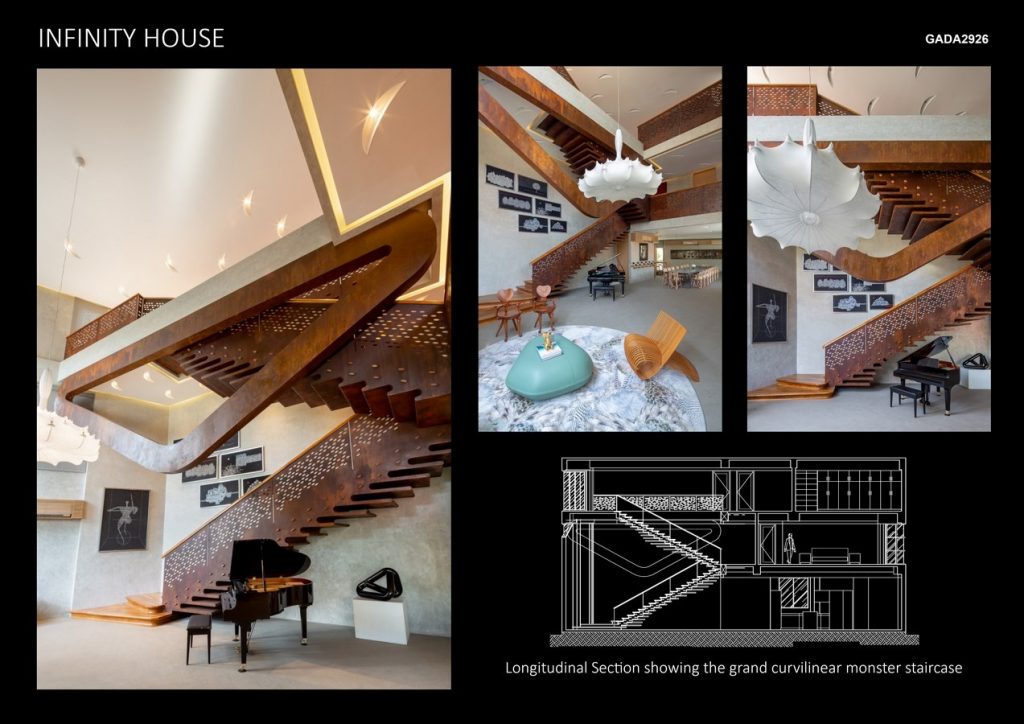 The design of the house is a hybrid of the natural and artificial worlds: nature is represented in the free flowing space and sectional portals like floating in gravity. The artifice is embodied in utilitarian function and intuiting the paradoxical potential in surreal forms: consider the grand curvilinear staircase made of weathered steel with details that resemble eyes – a kind of monster. The same refers to the halfmoon ceiling lights that look like a flock of luminescent birds in flight, again demonstrating a collision of the natural and artificial. One feels the flow of nature as the Infinity House changes character from day to night; by day, it is bathed in texture, a space where people can create and exhilarate in the literal and metaphorical wonders of the house – a space where we are encouraged to contemplate not only the aesthetic quality but also the polemics of the material and immaterial realms.
The design of the house is a hybrid of the natural and artificial worlds: nature is represented in the free flowing space and sectional portals like floating in gravity. The artifice is embodied in utilitarian function and intuiting the paradoxical potential in surreal forms: consider the grand curvilinear staircase made of weathered steel with details that resemble eyes – a kind of monster. The same refers to the halfmoon ceiling lights that look like a flock of luminescent birds in flight, again demonstrating a collision of the natural and artificial. One feels the flow of nature as the Infinity House changes character from day to night; by day, it is bathed in texture, a space where people can create and exhilarate in the literal and metaphorical wonders of the house – a space where we are encouraged to contemplate not only the aesthetic quality but also the polemics of the material and immaterial realms.
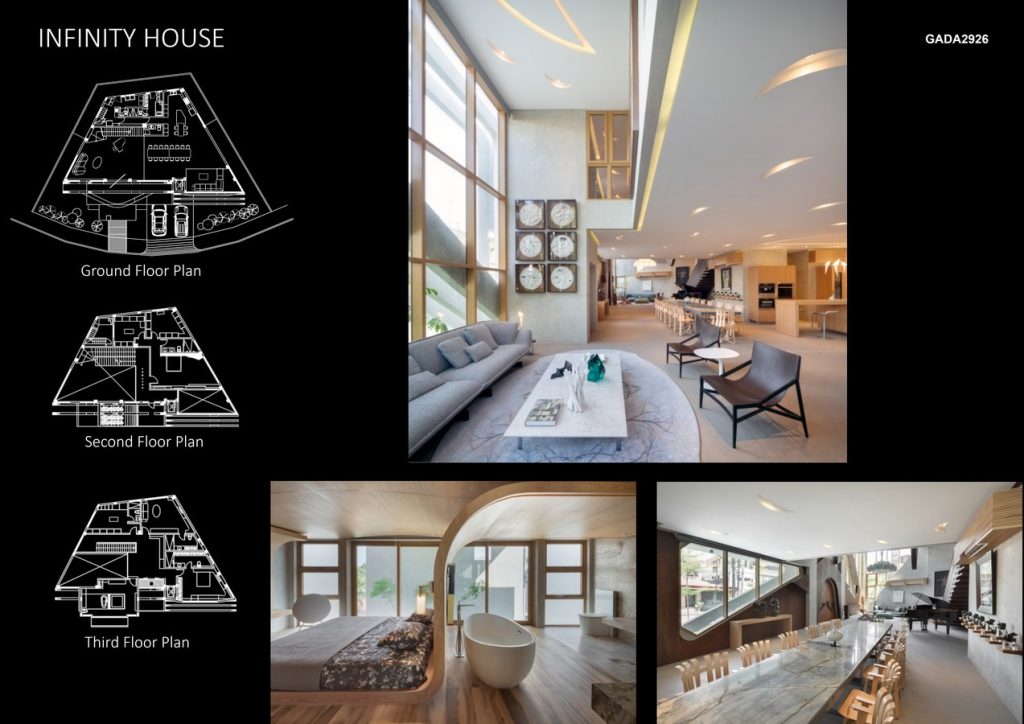 By night, unseen details come alive in startling ways, and a resounding silence descends upon the space. The contrast of materials become starker and textures shift in an interplay of light and shadow that becomes the stage for the materiality to display its more dramatic qualities. The ‘infinite’ quality of the House is portrayed in the use of persistent fluid details and how materials bend and fold in endless iterations – like peeling of the skin from the structural bones – a kind of naked architecture.
By night, unseen details come alive in startling ways, and a resounding silence descends upon the space. The contrast of materials become starker and textures shift in an interplay of light and shadow that becomes the stage for the materiality to display its more dramatic qualities. The ‘infinite’ quality of the House is portrayed in the use of persistent fluid details and how materials bend and fold in endless iterations – like peeling of the skin from the structural bones – a kind of naked architecture.
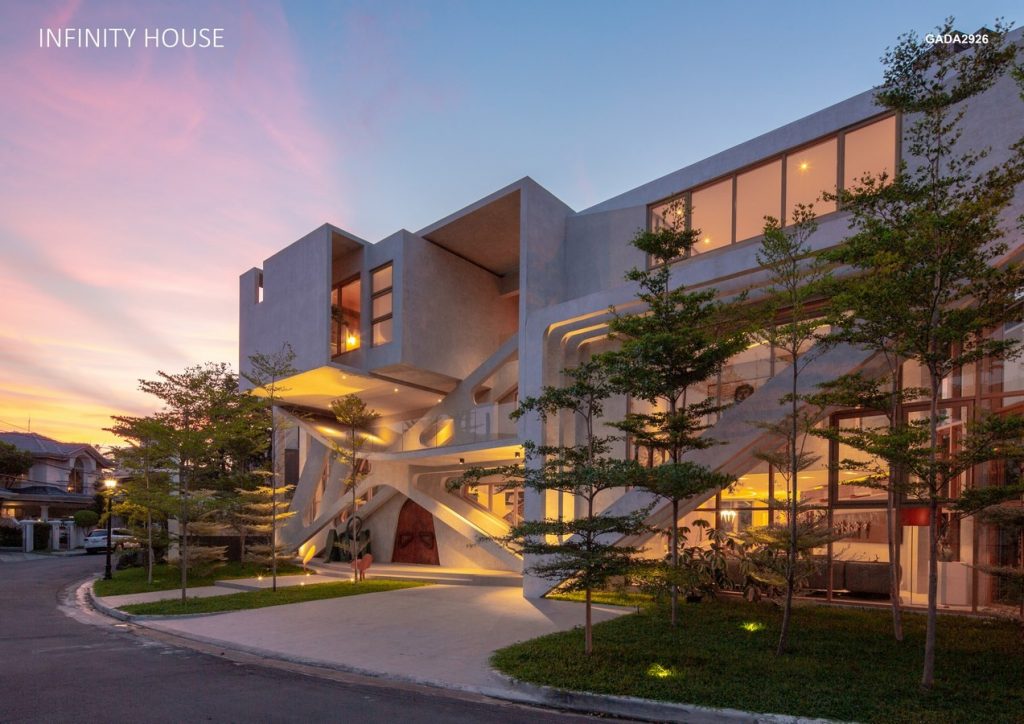 The Infinity House feels as one flowing, breathing organism that becomes a living entity by the value of human condition and experience. As once a fetishized sculptural object – it is no longer an object but a storyteller. It embodies sensual narratives and a kind of container of memories of the elicit kind.
The Infinity House feels as one flowing, breathing organism that becomes a living entity by the value of human condition and experience. As once a fetishized sculptural object – it is no longer an object but a storyteller. It embodies sensual narratives and a kind of container of memories of the elicit kind.

